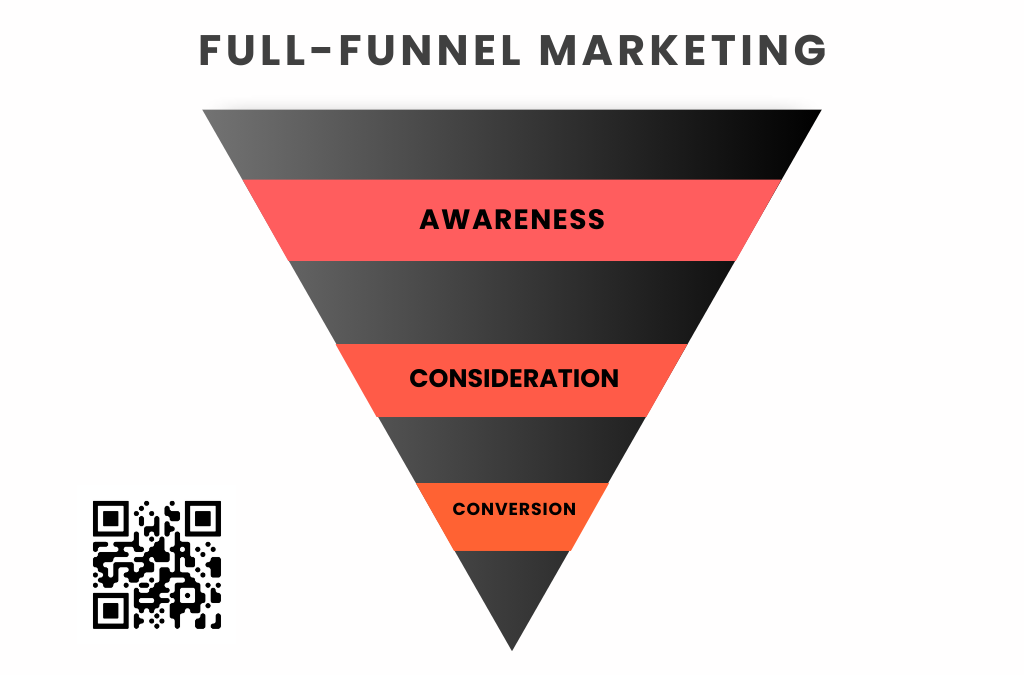In today’s hyper-competitive marketing landscape, brands face challenges when it comes to optimizing marketing across the full funnel. This is especially challenging in a marketing ecosystem that continues to expand with shiny new platforms and with full funnel metrics difficult to stitch together. Here are 2 major challenges brands face today:
- Inconsistent measurement across the marketing funnel. According to a survey by the CMO Council, only 29% of marketers feel they have a “complete and accurate” view of the customer journey across channels.
- An overemphasis on flashy new tools and technologies over proven strategies. As McKinsey notes, “Many companies are overprioritizing new tools and technologies over what actually works.” New tools should be used as a means to an end, not as an end all be all solution. The market is becoming extra crowded with tools, but what are you truly trying to solve?
These issues can lead to a singular focus on bottom-of-funnel metrics like conversions, while neglecting the critical upper- and middle-funnel activities critical for long-term growth. Upper and middle-funnel activities are often restrained by a lack of creative assets aligned to each funnel driver. Very simply put: education for awareness, persuasive & comparison for consideration, and testimonial/promotion to drive conversion. Aligning your marketing efforts and metrics across the full customer journey – a “full-funnel approach” – can help solve these problems.
The Rise of the Omnichannel Customer Journey: What it Means for Full Funnel Optimization
Today’s customer journey is a complex, omnichannel network of digital and offline touchpoints. To effectively navigate this landscape, brands must anticipate and cater to behaviors that differ vastly from the more straightforward brick-and-mortar shopping experiences of the past. A BCG report highlights, “Today’s customer journey is no longer linear – it’s a complex network of channels that brands must navigate.” Unified and integrated data systems can help ensure that insights gained at one stage of the funnel benefit other stages. But it’s also crucial to have the right key performance indicators (KPIs) in place for each part of the marketing funnel. Marketers need to focus on the unique customer behaviors that define success at every stage of the funnel.
How to Optimize and Identify Key Metrics Across the Full Marketing Funnel:
1. Make Sure Your Marketing Strategy Aligns with Your Business Goals
To really unlock the full power of a full-funnel approach, your marketing strategy has to be tightly connected to business goals and growth priorities. This means:
- Diving deep into customer insights and segmentation to really understand your audience – what do they truly need to solve their problem or meet their desires?
- Getting crystal clear on exactly what sources of sales growth you’re after (new customers, existing customer expansion, market share gains, etc.)
- Setting KPIs that directly support those growth goals at every stage of the funnel
Don’t just chase quick wins – the brands that find the right balance between short-term and long-term goals are the ones that build the strongest, most sustainable growth. As Adweek says, “Consistency is key to brand building, not just chasing clicks or impressions.” The path to maximizing your marketing impact and driving lasting growth comes down to intentionally investing across the entire customer journey. Align your strategy, creative, and measurement through a full-funnel lens to create the kind of holistic, omnichannel impact that today’s consumers are craving.
2. Know What to Look for re: the Hallmarks of Full-Funnel Success
There are several key indicators that a brand is successfully executing and optimizing toward a comprehensive, full-funnel marketing strategy:
- There is a full, organization-wide understanding of the business objectives and what “success” looks like for each channel. Clearly defining KPIs and success metrics helps ensure alignment across the organization.
- Realistic timelines and expectations have been set for achieving results. As Forbes states, “Setting the right expectations upfront is crucial for full-funnel success.”4
- The team is laser-focused on optimizing towards the overarching “north star” goal on a daily basis. According to Harvard Business Review, “Focusing on the ‘north star’ metric keeps the team united and moving in the right direction.”
3. Find a Collaborative Full Funnel Agency Partner
When you’re picking an agency or marketing partner, don’t settle for just another vendor. Utilize external expertise. This is key to ensuring a non-biased analysis of current programs and embedding best practices across campaigns and strategies. Look for a true collaborative partner who:
- Has deep expertise across the full digital marketing funnel
- Can help execute a seamless, cohesive brand story throughout customer touchpoints
- Willing to experiment with bold, innovative ideas (and accept that some will fail) while maintaining a focus on your north star and brand promise.
For over 10 years our agency, Simple Search Marketing, has developed the full-funnel – aligning brand awareness, consideration and conversion to drive sustainable growth for 60+ clients. With a data-driven framework and an obsession over the fundamentals, we’re the right agency partner to unlock your brand’s full potential through a truly integrated, omnichannel strategy.

